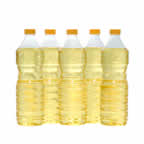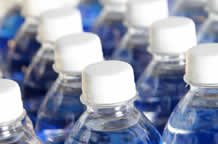
The safety of PET has been repeatedly demonstrated through extensive studies, regulatory approvals and scientific testing, as well as its widespread use and acceptance for more than 30 years.
PET has been cleared as safe for food and beverage contact by health and regulatory agencies around the world, including the U. S. Food & Drug Administration, Health Canada, and the EU’s European Food Safety Authority.
PET bottles and food jars can be found in the aisles of virtually any grocery store or market. PET containers are regularly used to package sodas, water, juices, salad dressing, cooking oil, peanut butter and condiments.
Many other consumer products, such as shampoo, liquid hand soap, mouthwash, household cleaners, dishwashing liquid, vitamins and personal care items are also frequently packaged in PET. Special grades of PET are used for carry-home food containers and prepared food trays that can be warmed in the oven or the microwave.
Can Be Refilled and Re-Used
Consumers should be assured that PET bottles are perfectly safe for repeated use. Rumors that washing, refilling and reusing a PET bottle will somehow cause the bottle to begin to degrade or release harmful substances are simply unfounded.
All major health-safety authorities have reviewed and cleared PET as safe for both single and repeated use. These agencies have also tested PET bottles and found no harmful substances in either new or re-used PET bottles.

However, the refilling and re-use of any bottle requires careful cleaning with soap and hot water, and thorough drying, to make sure it is sanitary and free from bacteria. It is especially important to completely dry a bottle before refilling and re-use, since bacteria can thrive in moist environments, and it can be very difficult to dry all areas inside a narrow-necked bottle.
Similarly, any bottle that has been scratched on the inside surface should be discarded in the recycle bin rather than re-used, since bacteria can become lodged in scratches and multiply.
